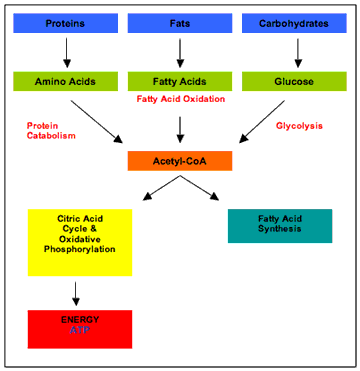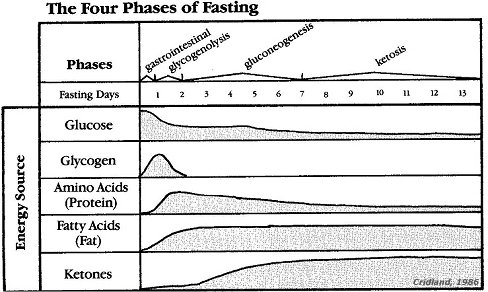With our intense focus on macronutrients, dieting and processed food consumption over the past 30 years, body fat levels have also increased. In other words, more information, more dieting, more junk food has given us more fat.
What is fat loss?
We store fat in adipose tissue in our bodies — mostly under the skin (subcutaneous) or in the body cavity (visceral), with a small amount in our muscles (intramuscular). Body fat is an energy storage depot.
When the substances providing energy become sparse in your bloodstream, the body detects this and calls on fat reserves for backup.
Fat storage and energy
Fats are stored as triglycerides in fat cells and are released via the activity of an enzyme known as hormone-sensitive lipase (HSL). This allows fatty acids to enter the blood, where they circulate bound to a protein called albumin and enter muscles to be “burned.” “Burning” of fat is also known as beta-oxidation.
Tissues can break down fatty acids by way of this beta-oxidation. The process of beta-oxidation ultimately produces ATP, which is the energy source for cells. This takes place in the mitochondria. Fatty acids enter the mitochondria via carnitine.
When high amounts of fatty acids are being broken down and flood the mitochondria (as in starvation), there may be no immediate need for them. In this case, they form energy-rich fragments known as ketones. This is important, as fat cannot be converted into glucose, but it can provide fuel for the muscle and brain in the form of these ketones.

ATP produced from the breakdown of fat is used for metabolic processes in the body including breathing, body temperature regulation, digestion, and excretion. At rest and very low intensity exercise, we get approximately 70% of the ATP produced from fats.
Why is fat loss so important?
We need to lose fat…
As a group, people in most industrialized societies are likely to be over-fat.

This isn’t just a cosmetic problem. Excess body fat can negatively affect nearly every facet of life, including:
- decreased mobility
- poorer emotional health and self-esteem
- increased risk of organ failure
- poorer circulatory health
- increased risk of heart disease
- increased risk of stress fractures
- increased risk of strokes
- increased risk of cancers
- decreased sexual and reproductive health
Fat cells can act as endocrine factories and produce hormones that influence numerous processes in the body — most of which lead to more fat accumulation.
Beyond the health of it all, carrying a lower body fat is often considered more attractive and desirable as the underlying musculature is revealed.
Further, carrying a lower body fat is advantageous for many sport competitors (barring sumo wrestlers, linemen, etc) as extra fat weight adds drag and additional resistance that must be overcome.
Bottom line: Carrying a lot of excessive body fat makes health, body composition, and athletic performance worse.
…but it’s hard.
But here’s the problem — collectively, we’re not very good at losing fat either.
Even modern advancements in obesity treatment (e.g., bariatric surgery, medication, etc) have a success rate of less than 10% for permanent weight reduction/management.
About 95% of those who are overweight go on repeated diets, only to gain most or all of the weight back within one year. Nearly 70% of the United States is overweight or obese. The percentage of 12 to 17 year olds who are overweight has doubled since 1980.
We need a better solution. Knowing how fat loss works may be helpful.
What you should know
Fat cells are a major storage site for body fat, and are in a continuous state of turnover. Fat metabolism is regulated independently by nutritional, metabolic, and hormonal factors; the net effect determines levels of circulating fatty acids and the extent of body fat.
Fat loss and hormones
Fatty acid release and use requires lower insulin levels and an increase of the hormones glucagon, cortisol, epinephrine, and growth hormone. These “anti-insulin” hormones activate HSL. The other major hormone that influences fat metabolism is thyroxine (thyroid hormone).
After a large feeding, glycogen is synthesized until stores are replenished. If high blood sugar persists, glucose is converted to fatty acids. Amino acids can also be converted to fatty acids. The enzyme necessary for cells to accept triglycerides is lipoprotein lipase.
In the un-fed state, insulin concentrations fall, and the anti-insulin hormones increase. This accelerates fat use.
Fat loss and caloric deficit
When we decrease our caloric intake significantly, the body preserves fat stores very efficiently. Since insulin is low, thyroid hormone production is decreased. With this, resting metabolism is lowered. This can take place within 24 hours of starting an extreme diet.
The body’s response to calorie deprivation makes rebound weight gain all but definite once the diet is discarded. Muscle is usually lost, so the body usually becomes fatter.
Fats are more than just a fuel source during rest and lower intensity exercise. Fats restore phosphagens that have been exhausted during high intensity exercise. After intense exercise sessions, oxygen uptake is increased, which allows restoration to pre-exercise conditions (the “afterburn” effect).

Fat loss is a complex problem
With our focus on specific nutrients, intense nutrition counseling, dieting and processed food consumption over the past 30 years, body fat levels have also increased. In other words, more information, more dieting, more junk food has given us more fat.
While some of this may seem counter-intuitive, it illustrates the importance of body awareness (hunger/satiety cues), avoidance of processed foods, regular physical activity and influential food advertising.
Summary and recommendations
To maintain a low body fat and/or lower body fat:
- Exercise at least 5 hours per week
- Eat whole/unprocessed foods at regular intervals, while being aware of physical hunger/fullness cues
- Sleep 7-9 hours per night
- Don’t engage in extreme diets
- Stay consistent with your habits
- Incorporate non-exercise physical activity
- Ignore food advertising
For extra credit
Aspartame was approved for use in 1981, and while this non-caloric sweetener was hypothesized to help control body weight, since 1980, levels of body fat have increased.
Factors associated with lower levels of body fat include:
- nuts
- green tea
- low energy-density foods
- dietary protein
- avoiding refined carbohydrates
- adequate hydration
- dietary fiber
- fruits and vegetables
- regular exercise
- adequate sleep
- a supportive social network
While cortisol can break down muscle tissue, it can also break down body fat.
If you increase physical activity and nutritious food intake, metabolism will increase.
Blaming weight gain on calories is like blaming wars on guns. The diet is not the cause of excessive body fat levels. Rather, it’s the entire lifestyle.
Severe calorie deprivation inhibits the production of serotonin, a brain chemical needed to control appetite and maintain harmony with food.
fate
References
Click here to view the information sources referenced in this article.
Learn more
Want to get in the best shape of your life, and stay that way for good? Check out the following 5-day body transformation courses.
The best part? They're totally free.
To check out the free courses, just click one of the links below.




Share